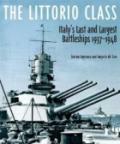For its final battleship design Italy ignored all treaty restrictions on tonnage, and produced one of Europe s largest and most powerful capital ships, comparable with Germany s Bismarck class, similarly built in defiance of international agreements. The three ships of the Littorio class were typical of Italian design, being fast and elegant, but also boasting a revolutionary protective scheme which was tested to the limits, as all three were to be heavily damaged in the hard-fought naval war in the Mediterranean; Roma had the unfortunate distinction of being the first capital ship sunk by guided missile. These important ships have never been covered in depth in English-language publications, but the need is now satisfied in this comprehensive and convincing study by two of Italy's leading naval historians.
The book combines a detailed analysis of the design with an operational history, evaluating how the ships stood up to combat. It is illustrated with an amazing collection of photographs, many fine-line plans, and coloured artwork of camouflage schemes, adding up to as complete a monograph on a single class ever published. Among warship enthusiasts battleships enjoy a unique status. As the great success of Seaforth s recent book on French battleships proves, that interest transcends national boundaries, and this superbly executed study is certain to become another classic in the field.
